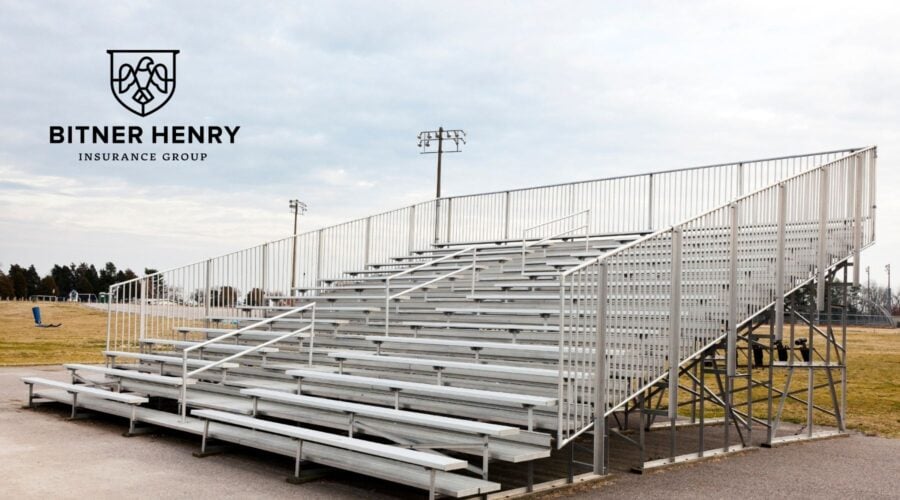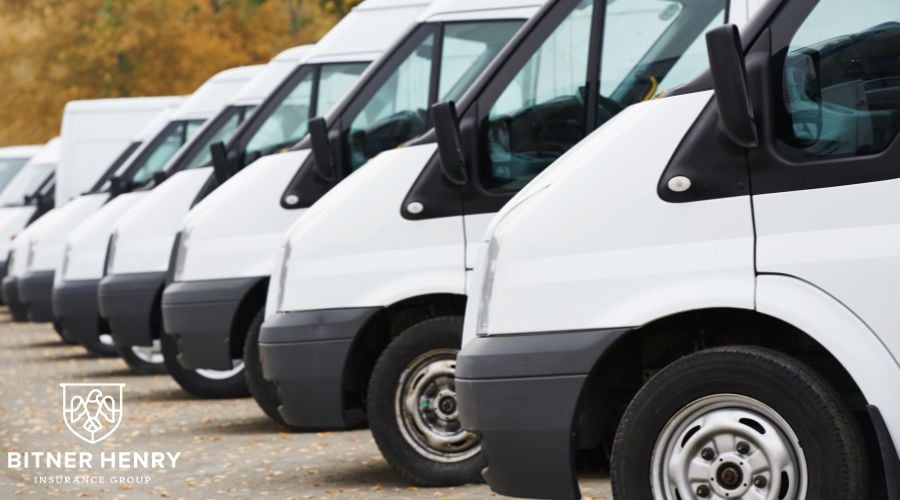
Bleachers are common in school sports stadiums and gyms, serving as seating for athletic events, concerts, assemblies, and other large gatherings. However, despite their prevalence, bleachers can pose serious safety risks if they are not used or maintained properly. These risks are often overlooked, yet they can lead to severe injuries and significant financial loss.
Thousands of bleacher-related injuries occur each year, and young children are especially at risk. Many of these incidents involve multiple parties, and they can result in physical injuries and emotional trauma as well as substantial settlements or jury awards. Given the potential for harm and liability, it is essential for schools to prioritize bleacher safety to protect students, staff, and the general public. This article provides more information on the risks associated with bleachers and offers tips on school bleacher safety.
The Risks Associated With Bleachers
While essential for accommodating spectators at events, bleachers pose several safety risks that must be carefully managed to help prevent injury and liability. Understanding these risks is crucial for facility managers, event organizers, and maintenance personnel to ensure safe usage and compliance with safety standards. Key risks associated with bleachers include:
- Structural failure—The structural integrity of bleachers can occur due to poor design, aging materials, lack of maintenance or exceeding load limits. A collapse can result in serious injuries or fatalities and may lead to significant legal and financial consequences.
- Slips, trips, and falls—These are among the most common bleacher-related incidents. They can happen in several ways:
- Falls off the back or side—Inadequate guardrails or barriers can lead to falls from elevated rows, especially in older or temporary bleacher setups.
- Falls through bleachers—Gaps between seats or steps can pose hazards, particularly for small children who may slip through.
- Slips, trips, and falls while walking on bleachers—Uneven surfaces, poor lighting, debris, or slippery conditions can cause trips and falls.
- Falls off stairs/ramps—Improperly designed or maintained access points (e.g., stairs and ramps) can lead to missteps, especially in high-traffic areas or during emergency evacuations.
- Entrapment—These risks arise when body parts, clothing, or personal items become caught in gaps or moving parts of a telescopic or retractable bleacher structure. Entrapment is particularly dangerous for children and can result in serious injuries.
- Overcrowding injuries—Overcrowding can strain the structural integrity of bleachers and increase the likelihood of falls, trampling, or panic during emergencies. It also complicates evacuation procedures and may violate fire and safety codes.
Best Practices for School Bleacher Safety
To help ensure bleacher safety, organizations should implement a comprehensive risk management strategy that includes adherence to national safety standards, proactive oversight, and routine maintenance. The following best practices outline key steps for minimizing risks:
- Follow building codes, safety standards, and guidelines for bleachers. The Consumer Product Safety Commission (CPSC), International Building Code, and National Fire Protection Association provide safety standards and guidelines for bleachers that cover topics such as guardrail specifications, egress, nonskid surfaces, acceptable opening sizes, structural integrity, and inspection protocols. The CPSC also has guidelines for retrofitting bleachers. Adhering to these standards and recommendations can improve overall bleacher safety.
- Have a hazard reporting system and address issues immediately. A clear and accessible hazard reporting system empowers staff to identify and communicate safety concerns so they can be promptly addressed before escalating into safety issues. Bleachers should not be used until repairs that meet safety standards are finished, and records of inspections, repairs, and certifications should be maintained.
- Complete regular inspections. Routine inspections are critical to discovering wear, damage or structural weaknesses that could pose safety risks. Bleachers should be inspected by qualified staff at least every three months and prior to events. A licensed design professional should inspect bleachers at least every two years and provide a written certification of safety compliance.
- Ensure proper operation. Only staff members with adequate training should operate bleachers in accordance with manufacturer instructions to mitigate risks. This is especially important for telescopic bleacher models. Bleachers should also be closed off or properly stored when not in use.
- Clearly post rules for safe bleacher use. Visible signage outlining safety rules can inform spectators and reduce risky behavior. Signs should prohibit climbing on guardrails, running on bleachers, and overcrowding. They should also encourage safe movement on the bleachers and the supervision of children.
- Ensure supervision of bleachers and crowds. Active supervision during events can help prevent accidents and ensure quick responses to issues. Staff should be assigned to monitor bleacher areas, prevent overcrowding, assist spectators, and enforce safety rules. Public announcements should also be leveraged to remind attendees of safety rules (e.g., no running or playing on bleachers and no climbing on guardrails).
- Consider bleachers in the emergency action plan. Bleachers should be factored into emergency planning to help ensure safe and efficient evacuation. Plans should address how to clear bleachers quickly and safely in case of fire, severe weather, or other emergencies.
- Select qualified contractors and consultants when installing or repairing bleachers. The setup and repair of bleachers should only be performed by professionals with proven expertise. This is essential to avoid tip-overs or collapses. Insurance coverage, references, and credentials should be checked before hiring them. For major repairs or retrofits, engineers familiar with bleacher safety standards and local building codes should be utilized.
Additionally, school leaders should ensure they have proper insurance coverage to address associated bleacher risks, as some general liability policies exclude coverage for bleacher collapse. A licensed insurance professional can provide guidance on recommended coverage.
Conclusion
Bleacher safety is essential for preventing injuries, avoiding legal issues, and ensuring a positive experience for spectators. By recognizing risks and following safety standards, schools can reduce hazards and promote a safer environment.
Is your school in Virginia? Learn about Kyle Butler’s monthly newsletter for schools in Virginia!
If you are in need of insurance for your youth organization, home, business, international organization, home health organization, recovery program, ministry, or non-profit, feel free to request a quote! We would love to assist you with your insurance needs.
Read more articles on schools here.
Further Reading
Why I became a Sales Agent
New agent Nick Capobianco, on our Mid-Atlantic team, talks about why he became a sales agent, and why he chose Bitner Henry Insurance. For more...

Commercial P&C Prices Rise 5.4% in Q4 2024
Commercial property and casualty insurance prices rose an average of 5.4% across all lines in the fourth quarter of 2024. However, there was some...
